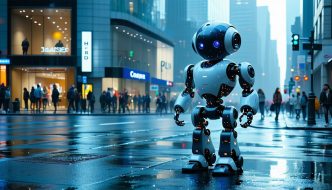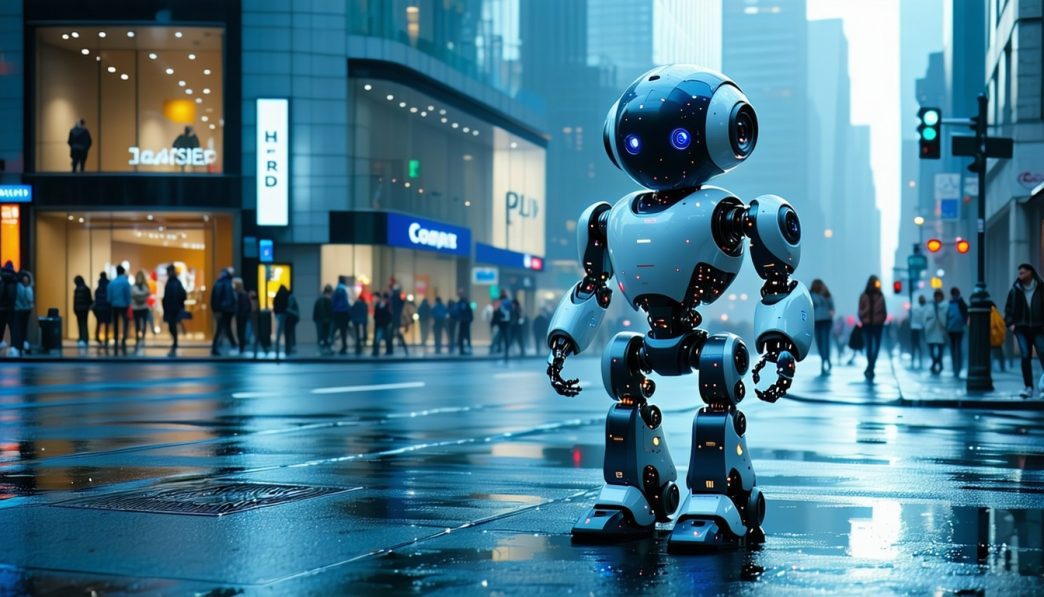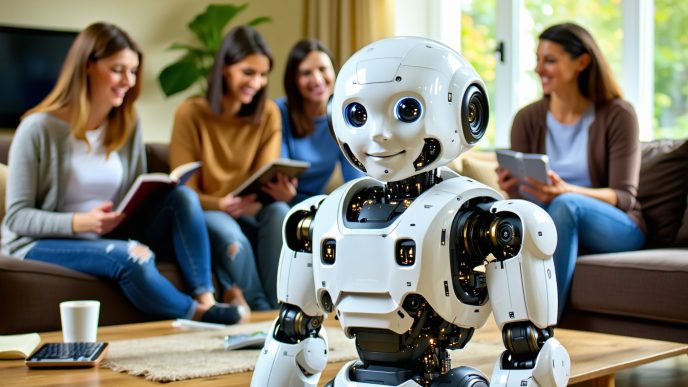Navigating Obstacles: A Challenge for Home-Based Humanoid Robots
Importance of Obstacle Avoidance in Humanoid Robot Navigation
For home-based humanoid robots, navigating through various environments is essential for their functionality. One of the primary challenges these robots face is obstacle avoidance. Effective navigation not only ensures that robots can move freely within a home but also guarantees the safety of both the robot and its human inhabitants. Learning to navigate through furniture, pets, and other elements without causing harm or disruption is a vital skill for these robotic assistants.
Obstacle avoidance plays a critical role in the overall performance of humanoid robots. It impacts their ability to perform tasks such as cleaning, delivering items, or assisting individuals with daily activities. Robots equipped with advanced navigation systems can enhance user experience significantly by functioning smoothly in a dynamic environment.
Overview of How Home-Based Humanoid Robots Overcome Obstacles
Home-based humanoid robots employ various technologies and strategies to successfully navigate obstacles. These methods include the use of sensors, perception algorithms, and sophisticated mapping techniques.
Sensors and Perception
Sensors are integral to a robot’s ability to detect obstacles. They gather data about the robot’s surroundings, allowing it to form a mental map of obstacles it may encounter. Common types of sensors used in robot navigation include ultrasonic sensors, infrared sensors, and cameras. These devices provide critical information regarding distance, size, and position of obstacles.
Mapping and Path Planning
Once the sensors detect obstacles, the robot relies on mapping methods to create a visual representation of its environment. This mapping process helps in identifying paths that are clear of obstructions. Following map creation, the robot implements path planning strategies to decide on the best route to take.
Table: Sensor Types Used in Humanoid Robot Navigation
| Sensor Type | Function | Common Use |
|---|---|---|
| Ultrasonic Sensors | Measure distance using sound waves | Obstacle detection |
| Infrared Sensors | Detect presence and distance using infrared light | Proximity sensing |
| Cameras | Capture and analyze visual data | Object recognition |
Through these strategies, home-based humanoid robots become adept at navigating obstacles, improving their overall efficiency and effectiveness in various home environments. Understanding these navigation technologies enhances the conversation around humanoid robot navigation. As technology progresses, these capabilities are expected to evolve further, making humanoid robots even more capable assistants in daily life.
Sensors and Perception
The ability of home-based humanoid robots to navigate effectively relies heavily on advanced sensors and perception capabilities. These components enable the robots to detect and interpret their surroundings, ensuring safe and efficient movement through various environments.
Role of Sensors in Detecting Obstacles
Sensors serve as the primary means for humanoid robots to perceive their environment. They collect data about obstacles, distances, and spatial configurations. Common types of sensors used in humanoid robots include:
| Sensor Type | Functionality |
|---|---|
| Ultrasonic Sensors | Measure distances using sound waves |
| LIDAR (Light Detection and Ranging) | Creates a 3D map of surroundings using laser light |
| Infrared Sensors | Detect obstacles and measure proximity |
| Cameras | Capture visual information for image processing |
These sensors work together to build a comprehensive understanding of the robot’s environment. By analyzing the data collected by these sensors, the robot can identify potential obstacles in its path.
Perception Algorithms for Obstacle Recognition
Once the sensors gather data, perception algorithms process this information to recognize and classify obstacles. These algorithms rely on several techniques, including computer vision and machine learning.
- Computer Vision: Robots use cameras to analyze images and identify features of their surroundings. This allows them to detect obstacles based on shape, size, and color.
- Machine Learning: By training on various obstacle datasets, robots improve their ability to recognize different types of objects. This adaptation enhances their navigation skills.
The combination of sensors and perception algorithms significantly enhances humanoid robot navigation. For those interested in exploring how humanoid robots utilize sensors, check out our article on humanoid robot sensors.
Overall, the integration of advanced sensors and perception algorithms forms the backbone of humanoid robot navigation, enabling these machines to maneuver efficiently and safely around obstacles.
Obstacle Mapping and Path Planning
Navigating around obstacles is a critical functionality for home-based humanoid robots. To successfully navigate their environments, these robots must create accurate maps and devise efficient path planning strategies.
Creating Maps of the Environment
To begin, humanoid robots employ various techniques to create detailed maps of their surroundings. This mapping process enables them to understand the layout of their environment and identify potential obstacles. Robots often utilize a combination of sensors such as cameras, ultrasonic sensors, and LIDAR, which helps them gather information about their surroundings.
| Sensor Type | Purpose | Accuracy |
|---|---|---|
| Cameras | Visual mapping and object detection | Medium |
| Ultrasonic | Distance measurement | High |
| LIDAR | 360-degree spatial mapping | Very High |
The mapping process typically includes the following steps:
- Data Acquisition: Collecting data from various sensors.
- Data Processing: Analyzing the gathered data to identify obstacles and free space.
- Mapping: Visualizing the analyzed information into a coherent map that the robot can interpret.
Once the robot creates a map, it can use this information for effective route planning. Humanoid robots can also update their maps in real-time, allowing them to adapt to changing environments.
Path Planning Strategies for Navigation
With a map in place, the next step is path planning, which involves determining how the robot will navigate from one point to another while avoiding obstacles. Several strategies are utilized for this purpose, including:
| Path Planning Strategy | Description | Use Cases |
|---|---|---|
| A* Algorithm | A search algorithm that finds the shortest path | Indoor navigation |
| Dijkstra’s Algorithm | Computes the shortest paths from a single source node | Complex environments |
| Rapidly-exploring Random Trees (RRT) | A probabilistic method useful for high-dimensional spaces | Dynamic settings, outdoor environments |
These path planning strategies rely on the robot’s map to compute optimal routes. The selected strategy depends on the specific use case, such as indoor navigation, outdoor exploration, or environments with dynamic obstacles.
By effectively creating maps and planning paths, humanoid robots can enhance their navigation capabilities. These capabilities are crucial for fulfilling tasks in various domains, including home assistance, healthcare, and logistics. For more insights into humanoid robots, consider exploring articles about humanoid robots for home use and humanoid robots in healthcare.
Collision Avoidance Techniques
Humanoid robots face the significant challenge of navigating environments filled with obstacles. To maneuver successfully, they employ various collision avoidance methods, broadly categorized into reactive and predictive approaches.
Reactive Methods for Instant Obstacle Avoidance
Reactive techniques focus on immediate responses to obstacles once they are detected. These methods rely on real-time data from sensors to make quick adjustments to the robot’s trajectory. The basic operation involves the following steps:
- Obstacle Detection: Sensors, such as LiDAR or cameras, quickly identify nearby objects.
- Immediate Response: Upon detection, the robot adjusts its movements or path to avoid a collision. This may include stopping, reversing, or altering direction.
- Feedback Loop: The robot continuously evaluates its surroundings and updates its responses, ensuring safety in dynamic environments.
The efficiency of these reactive methods is heavily reliant on the sensor’s accuracy and speed. Table 1 below illustrates common reactive techniques used by humanoid robots.
| Technique | Description | Advantages |
|---|---|---|
| Stop and Reverse | The robot halts and moves back upon detection. | Simple and effective. |
| Side-Step Maneuver | The robot moves sideways to evade the obstacle. | Useful for narrow spaces. |
| Turn and Redirect | The robot changes direction based on obstacle position. | Flexibility in navigation. |
Predictive Approaches for Anticipating Obstacles
Predictive strategies take a more advanced approach by anticipating potential obstacles before they become a threat. These methods involve analyzing the robot’s environment and predicting the movement patterns of static and dynamic objects. The basic workflow includes these steps:
- Environmental Mapping: The robot creates a map of its environment, including common pathways and potential hazards.
- Behavior Prediction: The robot uses algorithms to estimate the movement of people and objects within its surroundings, allowing it to foresee potential collisions.
- Proactive Path Adjustment: By analyzing data, the robot can preemptively change its route to avoid interacting with moving obstacles.
Predictive methods can significantly enhance humanoid robot navigation, as they allow these machines to operate more fluidly in complex environments. Table 2 outlines various predictive techniques utilized by humanoid robots.
| Technique | Description | Advantages |
|---|---|---|
| Motion Pattern Analysis | Predicts object movements based on past behavior. | Increases navigation efficiency. |
| Dynamic Path Planning | Adjusts paths in real-time to account for detected changes. | Improves overall safety and adaptability. |
| Simulation-Based Forecasting | Uses simulated environments to predict future states. | Enhances planning for complex scenarios. |
Both reactive and predictive techniques are essential for ensuring effective humanoid robot navigation. By integrating these methods, robots can successfully navigate through homes, workplaces, and public spaces while minimizing risks associated with obstacles. For more insights on how these robots operate, explore our articles on humanoid robots for home use and humanoid robot locomotion systems.
Locomotion and Maneuvering
To effectively navigate their environments, home-based humanoid robots utilize intricate locomotion systems and maneuvering techniques. These capabilities are vital for avoiding obstacles and ensuring smooth navigation in diverse settings.
Adaptive Locomotion in Response to Obstacles
Adaptive locomotion refers to the robot’s ability to adjust its movement patterns based on the environment. By constantly analyzing sensor data, humanoid robots can modify their stride, speed, and body posture in real-time to navigate around obstacles.
Several key elements contribute to adaptive locomotion:
| Element | Description |
|---|---|
| Sensor Feedback | Sensors detect nearby obstacles and relay data to the robot’s control system. |
| Real-time Processing | The robot evaluates sensor information instantly, allowing for immediate adjustments. |
| Joint Flexibility | Robots with varying degrees of joint movement can better maneuver around tight spaces. |
| Stability Control | Maintaining balance while changing direction is crucial for effective navigation. |
This adaptability is especially important in home environments where unexpected obstacles, like furniture or pets, may arise. For more information on the sensors involved, refer to our article on humanoid robot sensors.
Maneuvering Techniques for Navigating Tight Spaces
Humanoid robots often face challenges when navigating through confined areas. Effective maneuvering techniques play a significant role in overcoming these hurdles.
Some common techniques include:
- Side-Stepping: This allows the robot to move sideways to avoid obstacles without losing its forward trajectory.
- Pivoting: The robot can turn in place, recalibrating its path without needing additional space.
- S-pattern Movement: This technique enables the robot to shift slightly away from the direct path while still progressing toward the goal, similar to how a person might navigate through a crowded space.
| Technique | Advantages |
|---|---|
| Side-Stepping | Reduces the need for large open spaces. |
| Pivoting | Facilitates quick course correction. |
| S-pattern Movement | Balances efficiency with safety in tight quarters. |
Employing these techniques helps humanoid robots to navigate homes effectively, enhancing their ability to perform tasks in varied environments. For a deeper understanding of the locomotion systems used in these robots, explore our article on humanoid robot locomotion systems.
Machine Learning for Enhanced Navigation
Humanoid robots rely heavily on machine learning techniques to enhance their navigation capabilities, allowing them to better interact with their environments. Through various training methods and advanced algorithms, these robots become adept at navigating complex spaces while avoiding obstacles effectively.
Training Humanoid Robots to Navigate Complex Environments
Training humanoid robots involves using vast amounts of data to develop models that help them process information about their surroundings. These models allow the robots to learn how to navigate complex environments filled with various obstacles. Key aspects of the training process include:
| Training Component | Description |
|---|---|
| Dataset Creation | Collecting data from real-world scenarios and simulations to enhance learning models. |
| Reinforcement Learning | Allowing the robot to learn from the consequences of its actions in a trial-and-error manner. |
| Simulation Environments | Utilizing virtual environments to practice navigation without risks of damage or injury. |
The training ensures that humanoid robots can create a mental map of their environment, which is crucial for effective navigation and obstacle avoidance. For more about how robots learn in simulated settings, consider reading our article on humanoid robot training systems.
Role of Artificial Intelligence in Improving Obstacle Avoidance
Artificial Intelligence (AI) plays a significant role in refining the navigation skills of humanoid robots. It helps in several ways:
- Real-Time Decision Making: AI algorithms enable robots to make instantaneous decisions based on sensor data, allowing them to adapt to new obstacles as they arise.
- Improved Learning: AI enhances the capability of robots to learn from previous experiences, allowing them to recognize and recall various obstacles and adjust their movements accordingly.
- Data Processing: AI algorithms process data from multiple sensors simultaneously, ensuring that information about the environment is accurately interpreted.
The combination of these elements leads to sophisticated navigation and effective obstacle avoidance strategies in humanoid robots. For more details about AI applications in humanoid robots, explore our article on ai models in humanoid robots.
By integrating machine learning and AI, humanoid robots are better equipped to navigate their environments autonomously and safely. These advancements not only improve practicality in home settings but also enhance the capabilities of robots used in various fields such as healthcare and logistics.
Testing and Validation
Testing and validation are essential steps in ensuring that home-based humanoid robots can effectively navigate their environments. This section explores the tools used for simulation and the methods employed for real-world validation of obstacle avoidance strategies.
Simulation Tools for Testing Navigation Algorithms
Simulation tools play a vital role in developing and refining navigation algorithms for humanoid robots. These tools allow engineers and researchers to create virtual environments where robots can be tested without the risks associated with physical testing.
Common simulation platforms include:
| Simulation Tool | Features |
|---|---|
| Gazebo | 3D environment support, physics engine integration |
| V-REP (CoppeliaSim) | Multi-robot support, customizable robot models |
| Webots | Real-time simulation, extensive robot model library |
| ROS (Robot Operating System) | Middleware with robust support for simulation and sensor integration |
Using these platforms, developers can assess how well their navigation algorithms function under various scenarios, including different obstacle layouts and environmental conditions. Through iterative testing in simulated environments, engineers can improve humanoid robot navigation by fine-tuning algorithms before deploying them in real-world applications.
Real-World Validation of Obstacle Avoidance Strategies
Once simulation testing is complete, real-world validation of humanoid robots is necessary to ensure that navigation strategies perform effectively in practical settings. This process often involves placing robots in controlled environments that mimic typical home conditions.
Typically, validation includes:
- Testing the robot’s response to furniture, pets, and other common household obstacles
- Monitoring the robot’s ability to adapt to changes in its surroundings
- Evaluating the effectiveness of obstacle avoidance techniques in real-time scenarios
To quantify the performance of the humanoid robot, developers may track metrics such as:
| Metric | Description |
|---|---|
| Success Rate | Percentage of obstacles successfully avoided |
| Response Time | Time taken to react to an obstacle |
| Navigation Efficiency | Distance traveled versus path length |
Real-world testing not only validates the effectiveness of navigation algorithms but also helps identify any unforeseen issues that may arise in dynamic environments. Effective obstacle avoidance is crucial for the functionality of these humanoid robots in daily tasks, such as performing household chores or providing services in smart homes.














